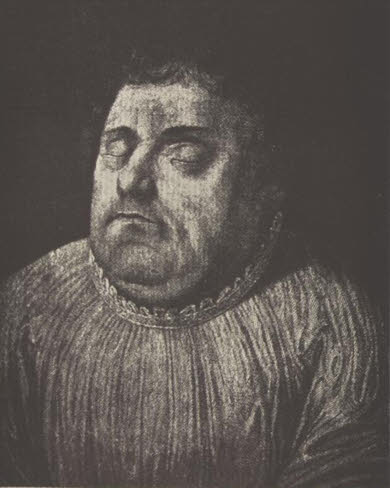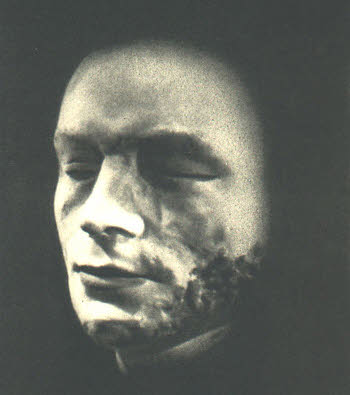 |
As
we have demonstrated so many times, the Protestant Revolt of the
sixteenth century, the French Revolution, and the Communist
Revolution constitute the three phases of the same immense movement,
united in spirit, objectives and even methods.
By analyzing the faces of three
great leaders of the Revolution, we will seek to see some of the
spiritual traits of this movement, that is, something of the
spirit of the Revolution.

In
the picture of the deceased Luther (by Lucas Fortnagel, in
the Library of the University of Leipzig), a careful analysis
reveals, in his rude features, the characteristic note of a
self-absorbed demagogue. It is like that of a street thug whose
preaching spread so many errors, caused so much revolt, and spilled
so much blood. However, the impression that immediately jumps out at
the observer is sensuality, and an exaggerated love for every kind
of delight. At first glance, this causes a distressing sensation. |

|
In Robespierre, whose death
mask from the Tussaud Museum we reproduce here, the principal note
expressed is hatred. It is a hatred so deep, so overpowering that it
constitutes, without ignoring sensuality, the dominant note of his
countenance. These lips, although closed forever, nevertheless
appear to exude something of the preaching of violence and death of
the Reign of Terror. These eyes that no longer see appear to
preserve a gaze of venomous hatred. His bulging forehead gives the
sensation of ruminating incendiary speeches and subversive plots. He
represents nothing but egalitarian hatred, both in abstract theory
and militant practice, and an immense desire to destroy everything
and anything that is superior to him. |
 |

 |
The
third image is of Ernersto “Che” Guevara, the Argentine
transplanted to Cuba, who expresses so well the Marxist cunning of
the Cuban Revolution.
His hair does not appear to be trimmed
or washed, and his thin and frayed mustache joins to a disheveled
beard with unclear contours. All this frames his face in untidiness
and disorder. This causes an instinctive revulsion, but also awakens
an impression of naturality and unpretentiousness taken to the
extreme.
His gaze has an uncommon lightness, and his smile seeks to give a
certain idea of bonhomie and affability that is almost mystical.
This sweet man is a supporter of a regime of firing squads, in front
of which so many victims have been cruelly killed. He supports a
regime that wages a persecution against the Church that is the same
style of Robespierre of Lenin. |

If the
countenance of Luther expresses above all the greed for the pleasures of
the flesh, and Robespierre expresses egalitarian hatred, “Che” Guevara
represents one of the more recent masks of the Revolution, that of
insincere bonhomie which ensures the worst violence.
(*)
Note: The preceding article has been translated and adapted for
publication without the author's revision. –Ed.
American TFP.
 |




